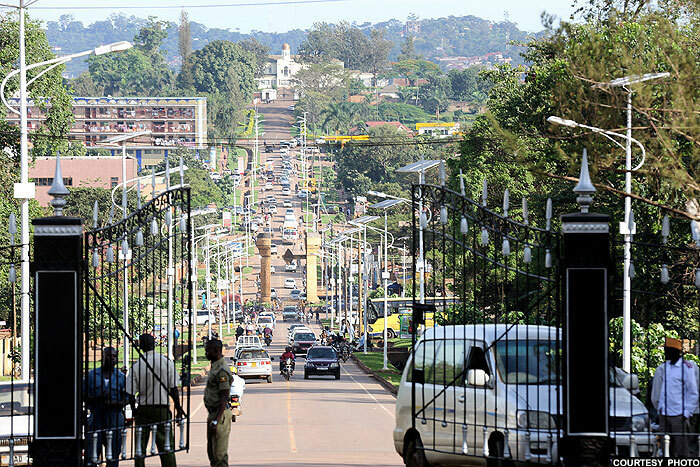New Buganda monument gets tourism ministry nod
At the base of the split drum are other drums (Nankasa) to represent the complete set of drums used in Buganda culture.
KAMPALA - The ministry of tourism, wildlife and antiquities has registered a new Buganda monument as an object of monumental value to Uganda's inventory list of historic places and properties.
The monument, whose centerpiece is a gigantic split drum (called engalabi in Luganda), is located at the roundabout along the Kabaka Anjagala road in Rubaga.
It is the combined work of three sets of teams: SASA Architects designed it while Kampala Capital City Authority (KCCA) and Global Youth Artisans built it.
Rose Mwanja Nkaale, the commissioner of museums and monuments in the tourism ministry wrote a letter to KCCA executive director Jennifer Musisi over the Nantawetwa Monument.
In the missive, Nkaale said a group of conservators from the development of museums and monuments, voted the property as nationally important.
"At an appropriate time a certificate will be issued," she said.

The property, Nkaale added, "is associated with important events or activities to the lives and wellbeing of Buganda Kingdom's long history and their kings' greatness/supremacy, resulting in the name ‘Kabaka Nantawetwa'.
The monument is in the middle of the stretch from Bulange (headquarters of the Buganda government) and the Lubiri (the king's palace). The stretch is also known as the Royal Mile or King's Way.
The structure rises 11 metres above the ground and the area has a diameter of 12.8 metres. The spear and shield hanging in the middle of the split drum represent the kingdom's emblem seen on the Buganda flag.
The concept
According to KCCA, the concept for this monument was based on the most popular musical instruments in Uganda - drums. The engalabi (long drum), popular in different Kiganda dances, was selected due to its length and uniqueness in shape.

At the base of the split drum are other drums (Nankasa) to represent the complete set of drums used in Buganda culture. These drums were made of reinforced concrete and anchored in a reinforced concrete base.
So why was the monument's engalabi split into two ? To provide access through the centre of the roundabout. At the core of each half drum is a hollow steel frame covered with reinforced concrete. The facades were given a textured finish to represent the timber from which drums are made - and also give it a more real look.
KCCA's task
According to KCCA deputy spokesperson Robert Kalumba, restoration works on Royal Mile, whose main feature is the monument, began in April last year.
The project was done by KCCA with funding support from private companies and individuals.
Last October, KCCA boss Musisi handed over the monument to Buganda kingdom. At the event, Katikkiro (Buganda prime minister) Charles Peter Mayiga hailed Musisi and the team for supporting Buganda projects and changing the face of Kampala city.
Kalumba says that apart from the drums, outdoor lighting was incorporated within the monument in order to illuminate the monument at night, making it visible to motorists and pedestrians moving along the Royal Mile.

KCCA, headed by Jennifer Musisi (pictured third from right), handed over the monument to Buganda Kingdom last year
Nantawetwa
Quoting Buganda elders, Kalumba explains that Nantawetwa, a restricted access through the roundabout, is only used by the Kabaka while traveling from Lubiri to Bulange.
"In Buganda tradition, Bulange and the Lubiri are situated at either end of a straight axis in order to accommodate a historic belief that the spirits that watch over the Kabaka walk in a straight line," explains Kalumba.
"The Baganda maintain that the straight route between the Bulange and Lubiri was also to ensure that there is no obstacle between the Kabaka's way.
"At the inception , the strategic location of the Bulange was also with the intention to look out for enemies who may attack the Kabaka's palace. This created the straight ceremonial line or road between Lubiri and Bulange called the Royal Mile or the King's Way."